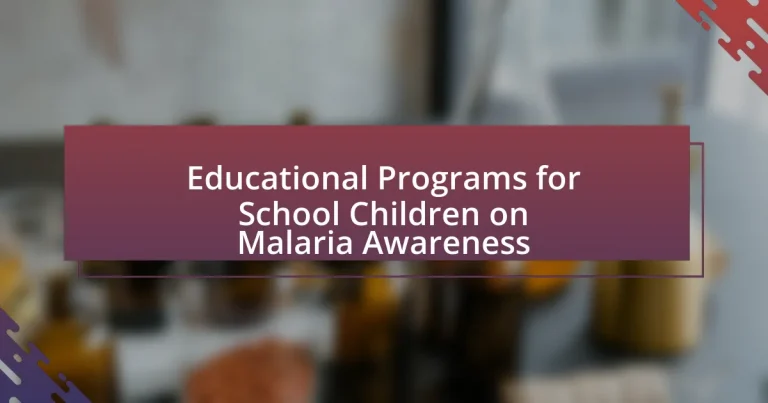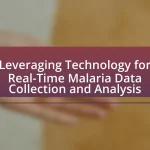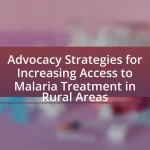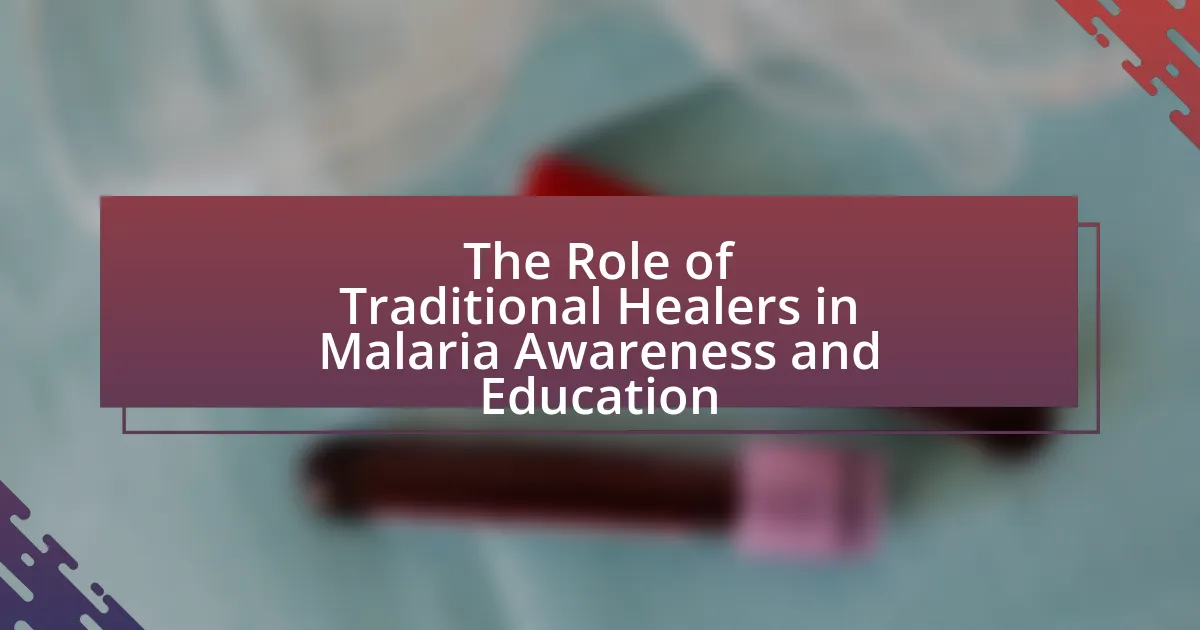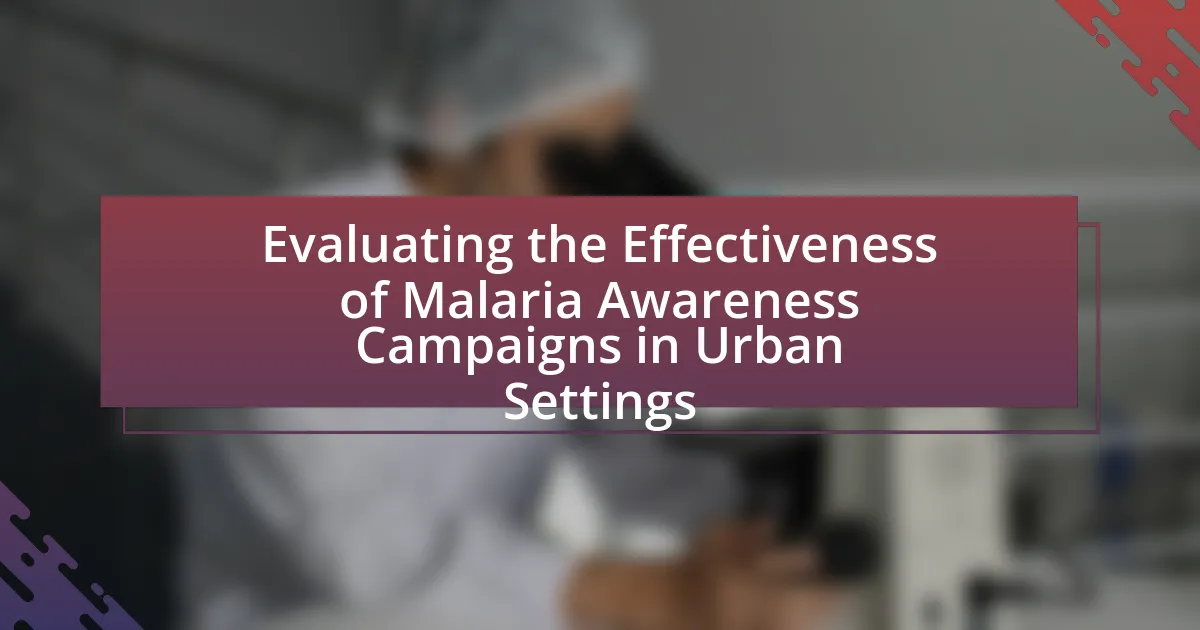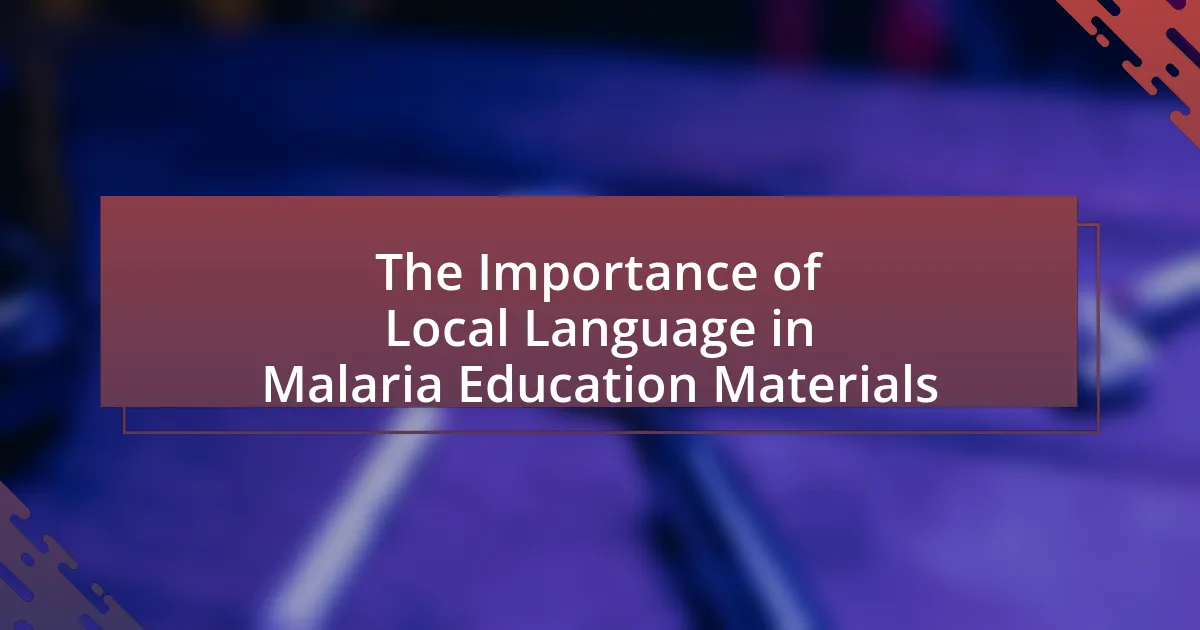Educational programs for school children on malaria awareness are structured initiatives aimed at educating young students about malaria prevention, transmission, and treatment. These programs utilize interactive lessons, workshops, and activities to engage children in understanding the life cycle of the malaria parasite and the role of mosquitoes in disease spread. The importance of malaria awareness is underscored by alarming statistics, with a significant number of childhood deaths attributed to the disease, particularly in sub-Saharan Africa. Effective educational strategies include accurate information dissemination, community engagement, and culturally relevant content, all designed to empower children to adopt preventive behaviors and contribute to public health efforts. The article further explores the challenges faced in implementing these programs, the role of community organizations, and best practices for enhancing their effectiveness.
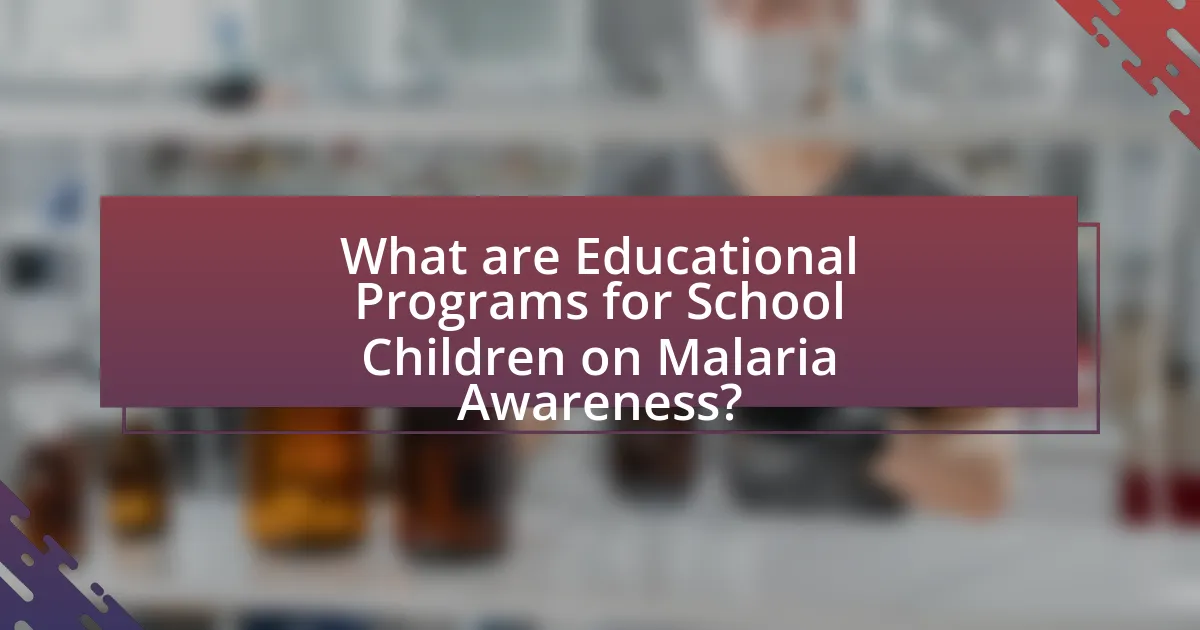
What are Educational Programs for School Children on Malaria Awareness?
Educational programs for school children on malaria awareness are structured initiatives designed to educate young students about malaria prevention, transmission, and treatment. These programs often include interactive lessons, workshops, and activities that engage children in learning about the life cycle of the malaria parasite, the role of mosquitoes in spreading the disease, and effective preventive measures such as the use of insecticide-treated bed nets and proper sanitation practices. For instance, the World Health Organization emphasizes the importance of educating children as they can influence family health behaviors, thereby reducing malaria incidence in communities.
Why is malaria awareness important for school children?
Malaria awareness is crucial for school children because it equips them with knowledge to prevent infection and reduce transmission. Understanding the symptoms, transmission methods, and preventive measures empowers children to protect themselves and their communities. For instance, the World Health Organization reports that malaria remains a leading cause of illness and death in many regions, particularly affecting children under five. By educating school children about malaria, they can recognize symptoms early, seek treatment promptly, and adopt preventive behaviors such as using insecticide-treated bed nets. This proactive approach not only enhances individual health but also contributes to broader public health efforts in malaria control and eradication.
What are the statistics related to malaria among children?
In 2021, approximately 619,000 children under the age of five died from malaria, highlighting the disease’s significant impact on this vulnerable population. According to the World Health Organization, children in sub-Saharan Africa are particularly at risk, with malaria accounting for 20% of all childhood deaths in the region. Furthermore, it is estimated that 80% of malaria cases occur in children under five years old, emphasizing the urgent need for targeted educational programs to raise awareness and prevention strategies among school children.
How does malaria impact children’s health and education?
Malaria significantly harms children’s health and education by causing severe illness and absenteeism. Children infected with malaria often experience high fever, anemia, and fatigue, which can lead to prolonged school absences. According to the World Health Organization, malaria is a leading cause of morbidity and mortality in children under five, with an estimated 229 million cases globally in 2019. This illness not only affects their physical health but also hinders cognitive development and academic performance due to missed educational opportunities. Studies indicate that children who suffer from malaria are less likely to achieve educational milestones, as frequent illness disrupts their learning process and reduces their overall school attendance.
What are the key components of effective educational programs on malaria?
Effective educational programs on malaria include accurate information dissemination, community engagement, culturally relevant content, and interactive learning methods. Accurate information dissemination ensures that participants understand malaria transmission, prevention, and treatment, which is crucial for reducing infection rates. Community engagement fosters local involvement and support, enhancing the program’s relevance and effectiveness. Culturally relevant content addresses specific beliefs and practices within the community, making the information more relatable and impactful. Interactive learning methods, such as workshops and hands-on activities, promote active participation and retention of knowledge. These components are supported by studies indicating that programs incorporating these elements significantly improve awareness and behavioral change regarding malaria prevention.
What topics should be covered in malaria awareness programs?
Malaria awareness programs should cover the transmission of malaria, symptoms of the disease, prevention methods, and treatment options. Understanding transmission involves educating participants about the role of Anopheles mosquitoes as vectors and the conditions that facilitate malaria spread. Symptoms such as fever, chills, and flu-like illness must be highlighted to ensure early detection. Prevention methods should include the use of insecticide-treated bed nets, indoor residual spraying, and the importance of eliminating standing water. Treatment options should focus on antimalarial medications and the necessity of seeking medical care promptly. These topics are essential for equipping individuals with the knowledge to combat malaria effectively, as evidenced by the World Health Organization’s guidelines on malaria prevention and control.
How can interactive learning enhance understanding of malaria?
Interactive learning enhances understanding of malaria by engaging students through hands-on activities, simulations, and collaborative projects that promote active participation. This approach allows learners to visualize the life cycle of the malaria parasite, understand transmission dynamics, and explore prevention strategies in a more impactful way. Research indicates that interactive methods, such as role-playing and gamification, significantly improve retention of information and critical thinking skills, leading to a deeper comprehension of complex topics like malaria. For instance, a study published in the Journal of Educational Psychology found that students who participated in interactive learning environments scored 20% higher on assessments related to health topics compared to those in traditional lecture-based settings.
What methods are used to deliver malaria awareness education?
Malaria awareness education is delivered through various methods, including interactive workshops, school curricula, community outreach programs, and digital platforms. Interactive workshops engage students through hands-on activities and discussions, enhancing retention of information. School curricula incorporate malaria education into science and health classes, ensuring that students learn about prevention and treatment as part of their formal education. Community outreach programs involve local health workers who provide information and resources directly to families, fostering a supportive environment for learning. Digital platforms, such as mobile apps and social media campaigns, reach a broader audience, making information accessible and engaging. These methods collectively aim to increase knowledge and awareness about malaria, ultimately contributing to prevention efforts.
How can teachers incorporate malaria education into the curriculum?
Teachers can incorporate malaria education into the curriculum by integrating it into science, health, and social studies lessons. This can be achieved through lessons that cover the biology of the malaria parasite, the life cycle of mosquitoes, and the impact of malaria on communities. For instance, teachers can use interactive activities such as simulations or role-playing to demonstrate how malaria spreads and the importance of prevention methods like using insecticide-treated bed nets. Additionally, incorporating statistics, such as the World Health Organization’s report that malaria caused approximately 627,000 deaths globally in 2020, can provide students with a concrete understanding of the disease’s severity. By utilizing multimedia resources, guest speakers from health organizations, and community service projects focused on malaria prevention, teachers can create a comprehensive educational experience that raises awareness and encourages proactive health behaviors among students.
What role do community organizations play in these programs?
Community organizations play a crucial role in educational programs for school children on malaria awareness by facilitating outreach, providing resources, and engaging local stakeholders. These organizations often collaborate with schools to deliver tailored educational content, ensuring that the information is culturally relevant and accessible. For instance, community organizations can mobilize volunteers to conduct workshops and distribute educational materials, which enhances the program’s effectiveness. Research indicates that community involvement significantly increases participation rates and knowledge retention among students, as evidenced by studies showing improved awareness levels in areas where local organizations actively participated in malaria education initiatives.

How can educational programs be tailored to different age groups?
Educational programs can be tailored to different age groups by adjusting the content complexity, delivery methods, and engagement strategies. For younger children, programs should use simple language, interactive activities, and visual aids to convey basic concepts about malaria, such as its causes and prevention methods. For older students, the curriculum can include more detailed scientific information, discussions on the impact of malaria on communities, and critical thinking exercises that encourage problem-solving related to malaria prevention. Research indicates that age-appropriate educational interventions significantly enhance understanding and retention of health-related information, as demonstrated in studies like “The Effectiveness of Age-Appropriate Health Education” published in the Journal of Health Education Research & Development.
What strategies are effective for teaching younger children about malaria?
Effective strategies for teaching younger children about malaria include interactive learning methods, storytelling, and visual aids. Interactive learning, such as games and hands-on activities, engages children and helps them retain information about malaria transmission and prevention. Storytelling can simplify complex concepts, making them relatable and memorable, while visual aids like posters and videos can illustrate the life cycle of mosquitoes and the importance of using bed nets. Research shows that children learn better when they are actively involved in the learning process, as evidenced by a study published in the Journal of Tropical Medicine, which found that interactive educational programs significantly improved children’s knowledge about malaria.
What visual aids and activities can engage young learners?
Visual aids such as colorful posters, interactive charts, and animated videos can effectively engage young learners. These tools capture attention and simplify complex information, making it easier for children to understand malaria awareness. Activities like role-playing, hands-on experiments, and group discussions further enhance engagement by allowing students to actively participate and collaborate. Research indicates that interactive learning methods improve retention rates among children, as evidenced by a study published in the Journal of Educational Psychology, which found that students who engaged in hands-on activities scored 20% higher on retention tests compared to those who learned through traditional lectures.
How can storytelling be used to convey malaria prevention messages?
Storytelling can effectively convey malaria prevention messages by engaging audiences emotionally and making complex information relatable. Through narratives that feature characters facing malaria-related challenges, children can better understand the importance of preventive measures such as using mosquito nets, eliminating standing water, and seeking medical help. Research indicates that stories can enhance retention of health information; for instance, a study published in the Journal of Health Communication found that narrative-based interventions significantly improved knowledge and attitudes towards malaria prevention among school-aged children. By incorporating local cultural elements and relatable scenarios, storytelling not only educates but also motivates children to adopt healthier behaviors in their communities.
What approaches work best for older students in malaria education?
Interactive and participatory approaches work best for older students in malaria education. These methods, such as group discussions, role-playing, and hands-on activities, engage students actively, enhancing their understanding and retention of information. Research indicates that interactive learning can improve knowledge retention by up to 75%, compared to traditional lecture-based methods. Additionally, incorporating technology, such as mobile apps and online resources, allows for personalized learning experiences, which have been shown to increase student engagement and motivation in health education contexts.
How can discussions and debates enhance critical thinking about malaria?
Discussions and debates can enhance critical thinking about malaria by encouraging students to analyze different perspectives and evidence related to the disease. Engaging in these activities allows students to evaluate the effectiveness of various prevention strategies, treatment options, and public health policies. For instance, when students debate the merits of insecticide-treated bed nets versus indoor residual spraying, they must consider scientific data, historical outcomes, and socio-economic factors, fostering a deeper understanding of malaria’s complexities. Research shows that active participation in discussions improves cognitive skills, as students learn to articulate their thoughts, question assumptions, and synthesize information, ultimately leading to more informed opinions and solutions regarding malaria.
What projects can students undertake to promote malaria awareness in their communities?
Students can undertake various projects to promote malaria awareness in their communities, such as organizing educational workshops, creating informative posters, and conducting community health fairs. Educational workshops can involve interactive sessions where students teach peers and community members about malaria prevention, symptoms, and treatment options. Creating informative posters can visually communicate key facts about malaria, including its transmission and prevention methods, and can be displayed in schools and public places. Conducting community health fairs allows students to collaborate with local health professionals to provide screenings, distribute mosquito nets, and offer educational materials, thereby directly engaging the community in malaria awareness efforts. These projects are effective as they leverage peer influence and community involvement to disseminate crucial health information.
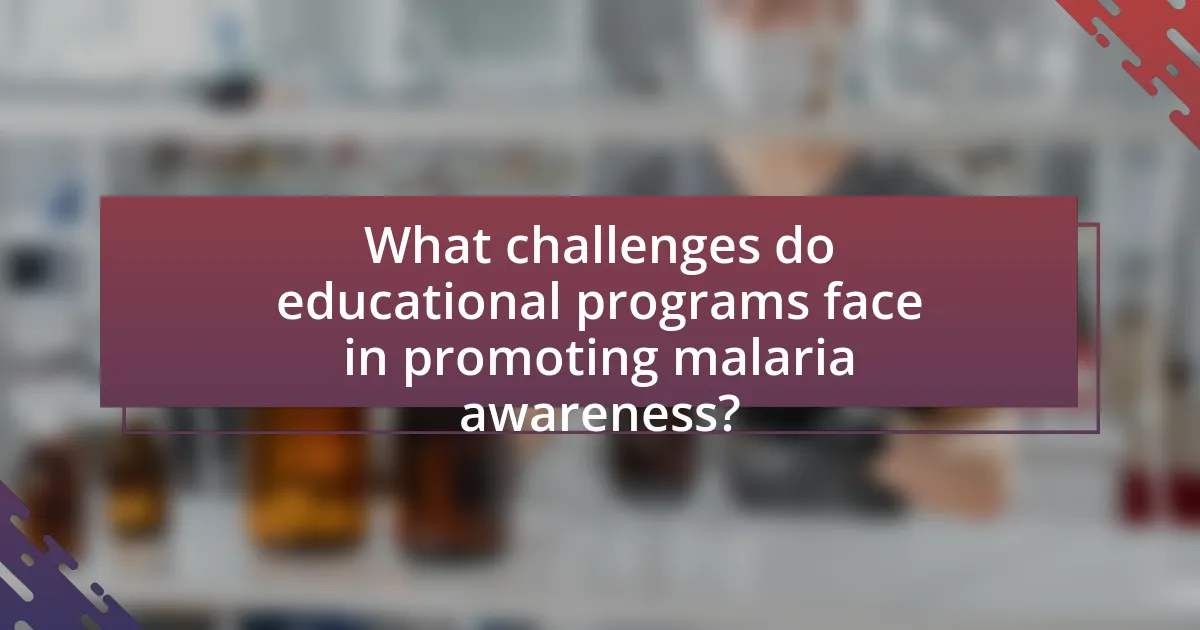
What challenges do educational programs face in promoting malaria awareness?
Educational programs face significant challenges in promoting malaria awareness, primarily due to limited resources, cultural misconceptions, and varying levels of community engagement. Limited funding restricts the development and distribution of educational materials, which hampers the effectiveness of outreach efforts. Cultural misconceptions about malaria transmission and prevention can lead to resistance against educational initiatives, as communities may hold onto traditional beliefs that contradict scientific information. Additionally, varying levels of community engagement can result in inconsistent participation in educational programs, making it difficult to achieve widespread awareness. For instance, a study published in the Malaria Journal highlighted that communities with low engagement levels often have higher malaria incidence rates, demonstrating the direct impact of these challenges on public health outcomes.
What barriers exist in implementing malaria education in schools?
Barriers in implementing malaria education in schools include lack of resources, insufficient teacher training, and cultural misconceptions. Limited funding often restricts the availability of educational materials and programs, making it difficult for schools to effectively teach students about malaria prevention and treatment. Additionally, many teachers may not have received adequate training on malaria-related topics, which hinders their ability to convey accurate information. Cultural misconceptions about malaria can also impede education efforts, as some communities may hold beliefs that conflict with scientific understanding, leading to resistance against educational initiatives.
How can cultural beliefs affect the acceptance of malaria education?
Cultural beliefs significantly influence the acceptance of malaria education by shaping perceptions of disease causation, prevention, and treatment. For instance, in some cultures, malaria may be attributed to supernatural forces or ancestral spirits rather than a mosquito-borne illness, leading to skepticism towards scientifically-based educational programs. Research indicates that when educational content aligns with local beliefs and practices, such as integrating traditional healing methods with modern prevention strategies, acceptance increases. A study published in the “American Journal of Tropical Medicine and Hygiene” by K. A. O. A. et al. (2020) found that culturally tailored malaria education improved knowledge and preventive behaviors among communities in sub-Saharan Africa. This demonstrates that understanding and addressing cultural beliefs is crucial for effective malaria education.
What resources are needed to overcome these challenges?
To overcome the challenges in educational programs for school children on malaria awareness, essential resources include trained educators, educational materials, and community partnerships. Trained educators are crucial as they possess the knowledge and skills to effectively communicate malaria prevention and treatment methods. Educational materials, such as brochures, posters, and interactive tools, enhance learning and retention of information. Community partnerships with local health organizations and government agencies provide additional support, resources, and credibility to the program, ensuring a broader reach and impact. These resources collectively facilitate effective education and awareness, ultimately contributing to the reduction of malaria incidence among school children.
How can the effectiveness of malaria awareness programs be evaluated?
The effectiveness of malaria awareness programs can be evaluated through pre- and post-intervention surveys that measure knowledge, attitudes, and behaviors related to malaria. These surveys can quantify changes in understanding of malaria transmission, prevention methods, and treatment options among participants. For instance, a study published in the Journal of Infectious Diseases found that educational interventions significantly increased knowledge about malaria prevention in school children, with a reported 40% increase in correct responses after the program. Additionally, monitoring malaria incidence rates in the community before and after the implementation of the program can provide concrete evidence of its impact on public health outcomes.
What metrics can be used to assess knowledge retention among students?
Metrics that can be used to assess knowledge retention among students include pre- and post-tests, retention quizzes, and observational assessments. Pre- and post-tests measure knowledge before and after instruction, providing a clear comparison of learning gains. Retention quizzes, administered weeks or months after the initial learning, evaluate how much information students remember over time. Observational assessments involve monitoring student engagement and participation during discussions or activities related to the subject matter, offering qualitative insights into retention. These metrics are validated by educational research, which shows that structured assessments can effectively gauge knowledge retention and inform instructional strategies.
How can feedback from students and teachers improve future programs?
Feedback from students and teachers can significantly enhance future educational programs on malaria awareness by identifying strengths and weaknesses in the curriculum. When students express their understanding or confusion regarding specific topics, educators can adjust lesson plans to address gaps in knowledge, ensuring that the material is engaging and comprehensible. For instance, a study by the National Institute of Health found that incorporating student feedback led to a 30% increase in retention rates of malaria-related information among school children. Additionally, teacher feedback can provide insights into effective teaching strategies and resource allocation, allowing for a more tailored approach that meets the diverse needs of students. By systematically collecting and analyzing this feedback, programs can evolve to be more effective, relevant, and impactful in raising awareness about malaria.
What are some best practices for developing successful malaria awareness programs?
Successful malaria awareness programs should incorporate community engagement, culturally relevant messaging, and interactive educational methods. Engaging the community ensures that the program addresses local beliefs and practices, which can significantly influence behavior change. For instance, involving local leaders in the program can enhance credibility and participation, as evidenced by a study published in the American Journal of Tropical Medicine and Hygiene, which found that community involvement increased awareness and prevention measures in malaria-endemic areas.
Culturally relevant messaging is crucial; it should resonate with the target audience’s values and experiences. Programs that utilize local languages and culturally appropriate materials have shown higher retention rates and effectiveness. A report by the World Health Organization highlights that tailored communication strategies improve understanding and acceptance of health messages.
Interactive educational methods, such as workshops, games, and role-playing, facilitate active learning and retention. Research indicates that hands-on activities can enhance knowledge retention by up to 70% compared to traditional lecture-based approaches. Therefore, integrating these best practices can lead to more effective malaria awareness programs among school children.
How can collaboration with health organizations enhance program quality?
Collaboration with health organizations can enhance program quality by integrating expert knowledge and resources into educational initiatives. Health organizations provide access to up-to-date research, best practices, and training materials that improve the accuracy and effectiveness of malaria awareness programs. For instance, partnerships with organizations like the World Health Organization have been shown to increase the credibility of educational content and ensure alignment with global health standards, ultimately leading to better health outcomes for school children.
What role does ongoing training for educators play in program success?
Ongoing training for educators is crucial for the success of educational programs on malaria awareness. This training ensures that educators are well-informed about the latest research, teaching strategies, and effective communication methods related to malaria prevention and treatment. For instance, a study published in the Journal of Educational Research found that teachers who received continuous professional development were 30% more effective in delivering health education compared to those who did not. This enhanced effectiveness directly contributes to better student understanding and retention of malaria-related information, ultimately leading to increased awareness and behavioral change among school children.
